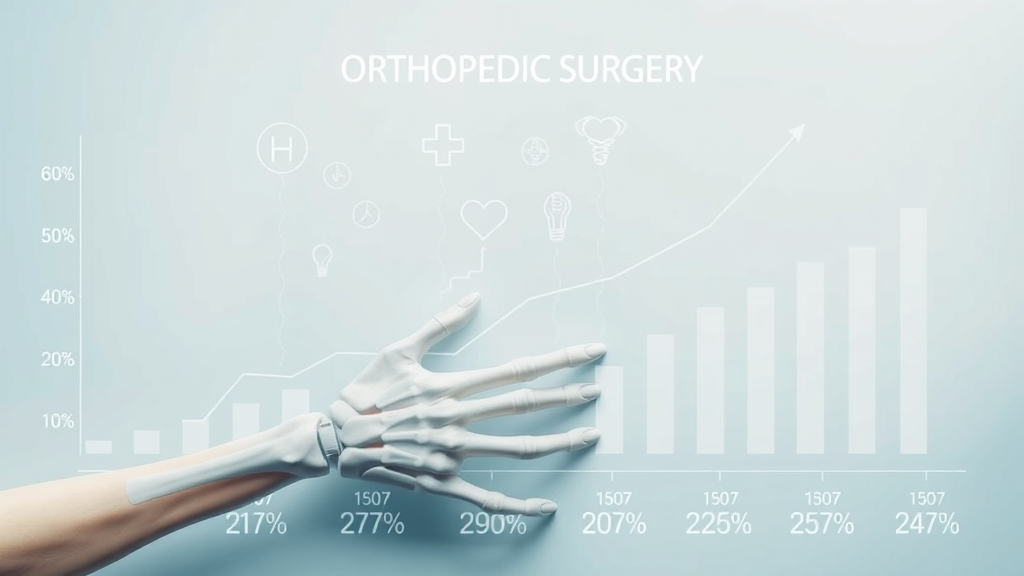Did you know that minimally invasive orthopedic surgery procedures have increased globally by over 30% in the last decade? This astounding growth signals a significant shift in how orthopedic conditions are treated today. Not only are these advanced techniques revolutionizing surgical outcomes, but they also redefine patient experiences by reducing recovery times and surgical risks.
In this comprehensive guide, we dive deep into the expanding world of minimally invasive orthopedic surgery, highlighting why it has become a cornerstone of modern medical practice. Dr. Timothy Larson of Denton Hand & Orthopedics shares expert perspectives on how these innovative approaches enhance treatment efficacy, improve patient care, and streamline orthopedic interventions.

What You'll Learn in This Guide
- Definition and scope of minimally invasive orthopedic surgery
- Common minimally invasive orthopedic surgical procedures
- Benefits and limitations of minimally invasive surgery
- Expert insights on treatment options and patient care
- Frequently asked questions about minimally invasive orthopedic surgery
Overview of Minimally Invasive Orthopedic Surgery
Minimally invasive orthopedic surgery refers to surgical techniques that utilize smaller incisions compared to traditional orthopedic surgeries. This approach prioritizes reducing trauma to surrounding tissues, which helps accelerate patient recovery and decrease post-operative pain.
Unlike conventional open surgeries, which often require large incisions and extensive tissue manipulation, minimally invasive methods leverage advanced imaging technologies such as in-office X-ray (XR) and ultrasound to guide precise surgical maneuvers. These sophisticated tools allow surgeons to operate with enhanced accuracy through smaller entry points, ensuring less collateral damage and improved outcomes.
According to Dr. Timothy Larson, of Denton Hand & Orthopedics , “Minimally invasive orthopedic surgery allows us to provide compassionate and individualized care while reducing patient recovery time and surgical risks.” This patient-centered approach embodies the evolution of orthopedic treatment in today’s healthcare landscape.

Common Minimally Invasive Orthopedic Procedures
Minimally invasive orthopedic surgery encompasses a variety of procedures targeting different joints and conditions. Some of the most prevalent include:
- Arthroscopic surgeries on joints such as the knee, shoulder, and elbow, allowing internal inspection and treatment through tiny incisions.
- Minimally invasive joint replacement and preservation surgeries that help restore joint function while minimizing tissue disruption.
- The strategic use of braces, casts, and orthopedic devices in tandem with minimally invasive techniques to support healing.
- In-office minor procedures that allow quick intervention and significant cost reduction by avoiding traditional hospital settings.

Benefits of Minimally Invasive Orthopedic Surgery
The advantages of minimally invasive orthopedic surgery are profound and multifaceted. Key benefits include:
- Faster recovery times: Smaller incisions and less tissue disruption mean patients can return to daily activities significantly sooner compared to traditional surgeries.
- Reduced pain and scarring: The minimal incision size not only cuts down postoperative discomfort but also results in less noticeable scars.
- Lower risk of infection and complications: Reduced exposure lowers the chances of surgical site infections and other postoperative complications.
- Convenience of outpatient or surgery center procedures: Many minimally invasive surgeries are performed outside large hospitals, improving accessibility and comfort.
- Cost savings: In-office procedures and partnerships with insurance entities enable patients to save money while receiving timely care.
Supporting this, Dr. Larson notes, “Our ability to perform minimally invasive procedures in-office or at nearby surgery centers significantly improves patient convenience and outcomes.” Such innovations align with the growing patient demand for efficacious and less disruptive treatment alternatives.

How Minimally Invasive Surgery Enhances Sports Medicine and Orthopedic Care
Minimally invasive orthopedic surgery has become a game-changer in sports medicine by enabling effective treatment of sports-related injuries with minimal downtime. Utilizing ultrasound and other imaging modalities allows rapid diagnosis and treatment planning, an invaluable advantage for athletes and active individuals.
Post-surgical care integrates hand therapy and rehabilitation to promote swift functional recovery, targeting strengths and flexibility while minimizing risks of reinjury. This holistic treatment pathway not only speeds up healing but also optimizes long-term joint performance.

Challenges and Limitations of Minimally Invasive Orthopedic Surgery
Despite its many benefits, minimally invasive orthopedic surgery is not universally applicable for all orthopedic conditions. Limitations include:
- Not suitable for all cases: Certain complex or advanced conditions may require traditional open surgery for adequate exposure and management.
- Technical complexity: Smaller incisions lead to limited visibility and operative space, demanding high surgeon expertise and experience.
- Critical patient selection: Successful outcomes rely heavily on evaluating patient candidacy carefully to ensure appropriateness and safety of minimally invasive techniques.
Highlighting these nuances, Dr. Larson explains, “It’s essential for patients to consult experienced surgeons who can accurately assess whether minimally invasive approaches are the best fit for their unique cases.”

Expert Recommendations for Patients Considering Minimally Invasive Orthopedic Surgery
- Seek consultations with seasoned orthopedic surgeons specializing in minimally invasive techniques to obtain thorough evaluations.
- Understand all treatment options from conservative management to surgical interventions including risks and benefits.
- Inquire about in-office imaging and therapy services that can expedite diagnosis and streamline care plans.
- Discuss insurance coverage and potential cost savings offered by minimally invasive and in-office procedure agreements.
People Also Ask: FAQs About Minimally Invasive Orthopedic Surgery
| Question | Answer Summary |
|---|---|
| What are minimally invasive orthopedic surgical procedures? | Procedures using small incisions and specialized instruments to treat orthopedic conditions with less tissue damage. |
| What qualifies as minimally invasive surgery? | Techniques that minimize incision size, reduce trauma, and promote faster recovery. |
| Who is a good candidate for minimally invasive spine surgery? | Patients with specific spine conditions who meet clinical criteria and have no contraindications. |
| What are the disadvantages of minimally invasive surgery? | Potential for limited surgical visibility, technical challenges, and not suitable for all cases. |
Key Takeaways
- Minimally invasive orthopedic surgery offers significant benefits including accelerated recovery times and fewer complications.
- Utilizing expert care with in-office imaging and integrated therapy enhances patient outcomes effectively.
- Proper patient candidacy evaluation remains critical for successful application of these techniques.
- Consultation with experienced orthopedic surgeons is essential to explore all available treatment avenues.
Conclusion: Embracing the Future of Orthopedic Surgery
- Minimally invasive orthopedic surgery is transforming patient care through innovative, compassionate, and effective treatment methods.
- Dr. Timothy Larson and Denton Hand & Orthopedics exemplify the integration of advanced treatment technology with personalized patient-centered care.
- Patients are encouraged to explore minimally invasive surgical options for improved recovery experiences and enhanced quality of life.
Ready to Feel Better? Schedule Your Consultation Today
- Visit www.dentonhand.com to book your appointment with Dr. Timothy Larson and the expert team.
- Take the first step towards effective, minimally invasive orthopedic care that prioritizes your health and convenience.
Minimally invasive orthopedic surgery has revolutionized patient care by offering procedures with smaller incisions, leading to reduced pain and faster recovery times. For instance, the article “Minimally Invasive Spine Surgery” from Johns Hopkins Medicine details how these techniques minimize harm to surrounding tissues, resulting in less postoperative discomfort and quicker healing. ( hopkinsmedicine.org ) Similarly, “Minimally Invasive Total Knee Replacement” by Johns Hopkins Medicine explains that using smaller incisions and specialized tools can lead to decreased recovery time and improved joint mobility. ( hopkinsmedicine.org ) If you’re considering orthopedic surgery, these resources provide valuable insights into the benefits and advancements of minimally invasive techniques.
 Add Row
Add Row  Add
Add 




Write A Comment